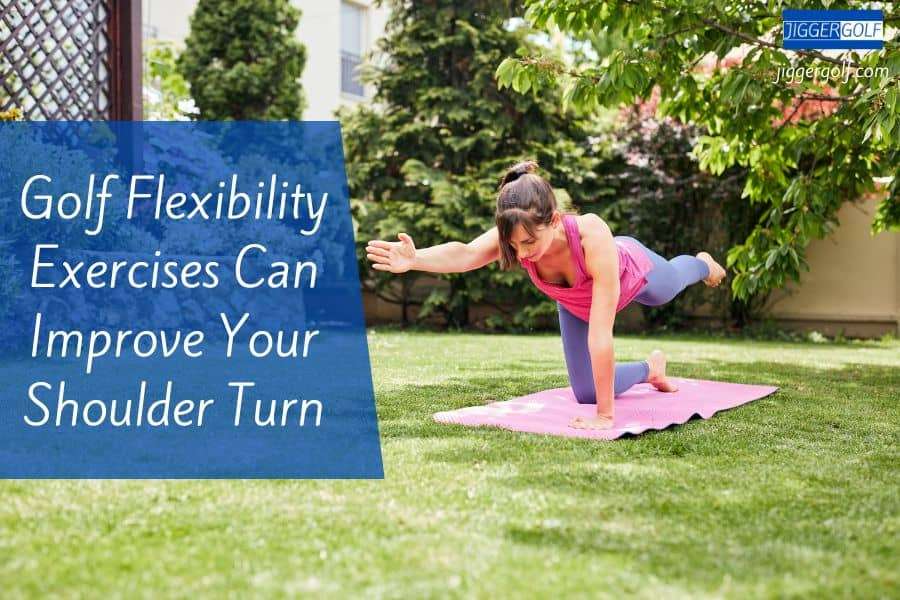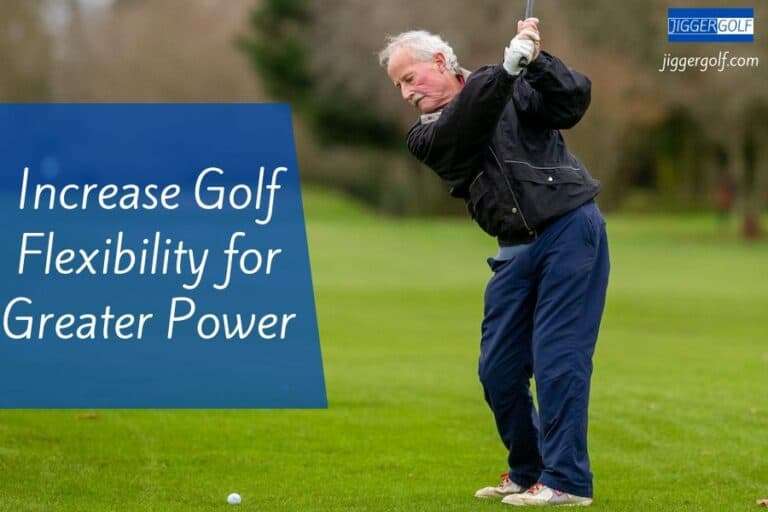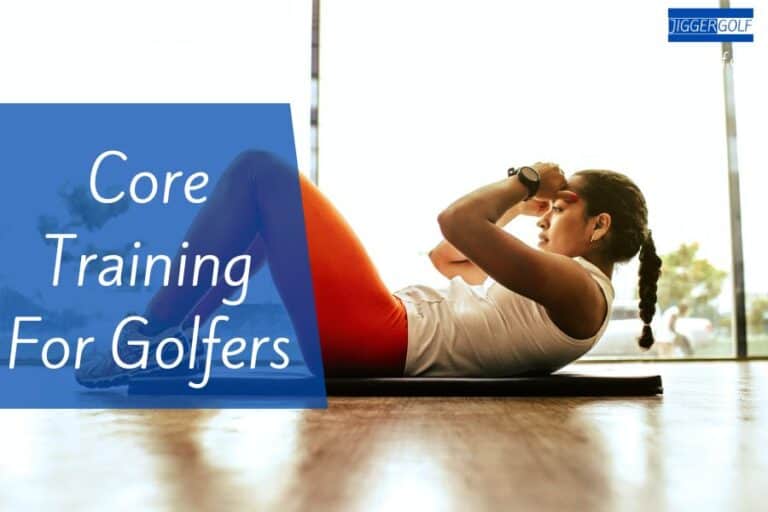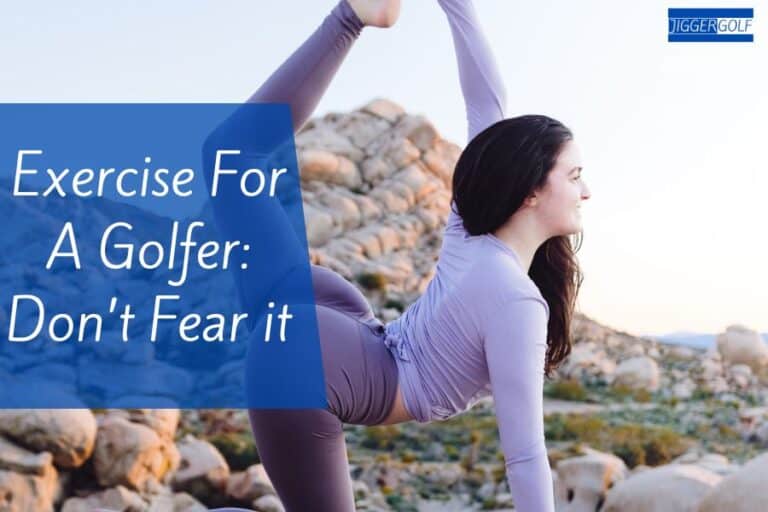Golf Flexibility Exercises Can Improve Your Shoulder Turn
I had a very interesting conversation during my workout this morning at the gym. I was performing a series of golf flexibility drills (Tops, Windmills, & Spiders to be exact) and a friend and very good golfer approached me.
My friend is a scratch golfer and started asking me about the series of flexibility exercises I was working on.
He said; “James, I have watched your workouts and they seem to be very athletically oriented. Those exercises you were just doing, what are they exactly for, and how can they help my golf swing?”
I get quite a few of these questions like this and my reply to him was as follows:
“First off the golf swing is an athletic movement (if you disagree with me on that point, go play 4 rounds of golf in four 4 days and get back to me).
It requires a high level of flexibility, balance, strength, endurance, and power to execute the swing correctly.
Knowing this you need to develop these physical characteristics (Flexibility, Balance, Strength, Endurance, and Power) within your body.
This will create the foundation upon which you can build an efficient and powerful golf swing. Let’s take a quick look at these concepts before moving onto some specifics.
Flexibility
In relation to the golf swing, is the ability to draw the club through the proper range of motion. A full golf swing requires you to draw the club through a long range of motion. In order to perform this action correctly the muscles within your body must be flexible.
If your muscles are inflexible the ability to draw the club through the correct range of motion will be compromised, resulting in compensations in your golf swing.
Balance
Secondly, the golf swing requires a high level of balance. Balance is often thought of as a responsibility of golf swing mechanics only. The reality of the situation is balance is a component of both efficient golf swing mechanics and the body.
The interaction of the muscular and nervous systems is responsible for your balancing capacities. These two systems regulate center of gravity, proprioception, and limb movement. If you have poor balancing capacities a directly negative effect will be seen in your golf swing.
Introducing balance exercises can improve the ability of your body to regulate its’ center of gravity, know where it is in “space” (proprioception), and regulate limb movement. This will have a direct benefit upon your golf swing.
Strength
Thirdly, the golf swing requires you to maintain a fixed spine angle, and rotate around this spine angle during the swing. In order to perform the swing correctly and maintain a fixed spine angle it is necessary to have high levels of muscular strength.
Muscular strength in relation to the golf swing is the ability of your muscles to maintain a fixed spine angle during each swing. If you are lacking muscular strength, the ability to maintain a fixed spine angle will be compromised.
Endurance
Fourth in our order of merit is endurance. The golf swing is a repetitive athletic movement, meaning you are performing the same athletic action (i.e. the golf swing) over and over again. Repetitive athletic movements over time cause fatigue within the muscular system. Once the muscular system is fatigued (i.e. tired) the ability to perform the intricate biomechanical movements of the golf swing will be compromised.
In order to combat such a situation it is necessary for the golfer to develop high levels of muscular endurance. Muscular endurance can be defined as the ability to perform a repetitive movement over and over again without becoming fatigued.
Healthline has some exercise to improve your muscular endurance.
Power
Finally, the golf swing encompasses power. Power is the ability to generate clubhead speed. Clubhead speed equates to greater distance on all your shots. Developing clubhead speed is a combination of both your swing mechanics and body.
In relation to the body it is the ability to generate the greatest amount of force within the golf swing. To increase the force outputs within the body it is necessary to develop high levels of muscular power. Developing muscular power relative to the golf swing increases the possibility of greater clubhead speed.
Quite often the amateur golfer does not have the flexibility, strength, balance, or power in the body to swing the golf club correctly.
The result is that sloppy, ineffective swing with a lot of body compensations.
Any serious amateur must spend some time on developing the body for the swing.
It does not need to be a substantial amount of time, but a little each day.
This will over time develop the body for the golf swing.”
My friend shook his head in definitive agreement and said he has lost some distance over the years and directly relates it to losing some of his flexibility.
I said “exactly! That is what happens, the body becomes deficient in one area or another and the golf swing is affected.
In addition to developing the body for the golf swing a certain order must be followed.”
He asked; “What do you mean exactly?”
I replied; “The physical parameters of the body must be developed in a specific order to get the greatest benefit.
For example, if you try to develop more power but are not flexible enough to execute a full shoulder turn.
The power in your body you develop will be worthless.
Start with flexibility, graduate to balance and then look at getting stronger and more powerful.
The exercises I was just performing are golf specific flexibility exercises to help the shoulder turn.
Remember, follow the logic; flexibility first, balance second, and then develop strength and power.
Golf Flexibility Exercises Can Improve Your Shoulder Turn: Conclusion
So you need to work on a number of aspects to improve your game. Work on flexibility and balance first before adding power otherwise you won’t be able to use it properly.
Make sure to plan your workouts so you don’t tax yourself too much and cause injury though.








